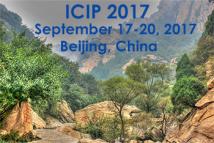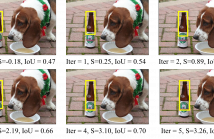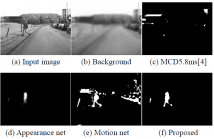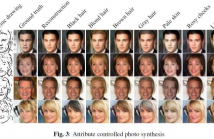
The International Conference on Image Processing (ICIP), sponsored by the IEEE Signal Processing Society, is the premier forum for the presentation of technological advances and research results in the fields of theoretical, experimental, and applied image and video processing. ICIP has been held annually since 1994, brings together leading engineers and scientists in image and video processing from around the world. Visit website.
- Read more about REALISTIC IMAGE COMPOSITE WITH BEST-BUDDY PRIOR OF NATURAL IMAGE PATCHES
- Log in to post comments
Realistic image composite requires the appearance of foreground and background layers to be consistent. This is difficult to achieve because the foreground and the background may be taken from very different environments. This paper proposes a novel composite adjustment method that can harmonize appearance of different composite layers. We introduce the Best-Buddy Prior (BBP), which is a novel compact representations of the joint co-occurrence distribution of natural image patches. BBP can be learned from unlabelled images given only the unsupervised regional segmentation.
- Categories:
 21 Views
21 Views- Read more about Dense Non-rigid Structure-from-Motion Made Easy -- A Spatial-Temporal Smoothness based Solution
- Log in to post comments
This paper proposes a simple spatial-temporal smoothness based method for solving dense non-rigid structure-from-motion (NRSfM). First, we revisit the temporal smoothness and demonstrate that it can be extended to dense case directly. Second, we propose to exploit the spatial smoothness by resorting to the Laplacian of the 3D non-rigid shape. Third, to handle real world noise and outliers in measurements, we robustify the data term by using the L1 norm.
- Categories:
 15 Views
15 Views- Read more about DIFFUSE-SPECULAR SEPARATION OF MULTI-VIEW IMAGES UNDER VARYING ILLUMINATION
- Log in to post comments
Separating diffuse and specular reflection components is important for preprocessing of various computer vision techniques such as photometric stereo. In this paper, we address diffuse-specular separation for photometric stereo based on light fields. Specifically, we reveal the low-rank structure of the multi-view images under varying light source directions, and then formulate the diffuse-specular separation as a low-rank approximation of the 3rd order tensor.
- Categories:
 14 Views
14 Views
- Read more about Object localization by optimizing convolutional neural network detection score using generic edge features
- Log in to post comments
In this research, we propose an object localization method to boost the performance of current object detection techniques. This method utilizes the image edge information as a clue to determine the location of the objects. The Generic Edge Tokens (GETs) of the image are extracted based on the perceptual organization elements of human vision. These edge tokens are parsed according to the Best First Search algorithm to fine-tune the location of objects, where the objective function is the detection score returned by the Deep Convolutional Neural Network.
- Categories:
 10 Views
10 ViewsWe proposed a novel and a Hierarchical Feature Model (HFM) for multi-target tracking. The traditional tracking algorithms
use handcrafted features that cannot track targets accurately when the target model changes due to articulation,
different illuminations and perspective distortions. Our HFM explore deep features to model the appearance of targets.
Then, we explore an unsupervised dimensionality reduction for sparse representation of the feature vectors to cope
Poster-Mohib_ICIP2017.pdf
- Categories:
 18 Views
18 Views- Read more about SUPERVISED HASHING WITH JOINTLY LEARNING EMBEDDING AND QUANTIZATION
- Log in to post comments
Compared with unsupervised hashing, supervised hashing commonly illustrates better accuracy in many real applica- tions by leveraging semantic (label) information. However, it is tough to solve the supervised hashing problem directly because it is essentially a discrete optimization problem. Some other works try to solve the discrete optimization problem directly using binary quadratic programming, but they are typically too complicated and time-consuming while some supervised hashing methods have to solve a relaxed continuous optimization problem by dropping the discrete con- straints.
ICIP3325.pdf
- Categories:
 5 Views
5 ViewsThis paper develops a novel object based graph model for semantic video comparison. The model describes a video with detected objects as nodes, and elationship between the objects as edges in a graph. We investigated several spatial and temporal features as the graph node attributes, and dierent ways to describe the spatial-temporal relationship between objects as the edge attributes. To tackle the problem of erratic camera motion on the detected object, a global motion estimation and correction approach is proposed to reveal the true object trajectory.
- Categories:
 18 Views
18 Views
- Read more about Appearance and Motion based Deep Learning Architecture for Moving Object Detection in Moving Camera
- Log in to post comments
Background subtraction from the given image is a widely used method for moving object detection. However, this method is vulnerable to dynamic background in a moving camera video. In this paper, we propose a novel moving object detection approach using deep learning to achieve a robust performance even in a dynamic background. The proposed approach considers appearance features as well as motion features. To this end, we design a deep learning architecture composed of two networks: an appearance network and a motion network.
ICIP17_heo.pdf
- Categories:
 66 Views
66 Views